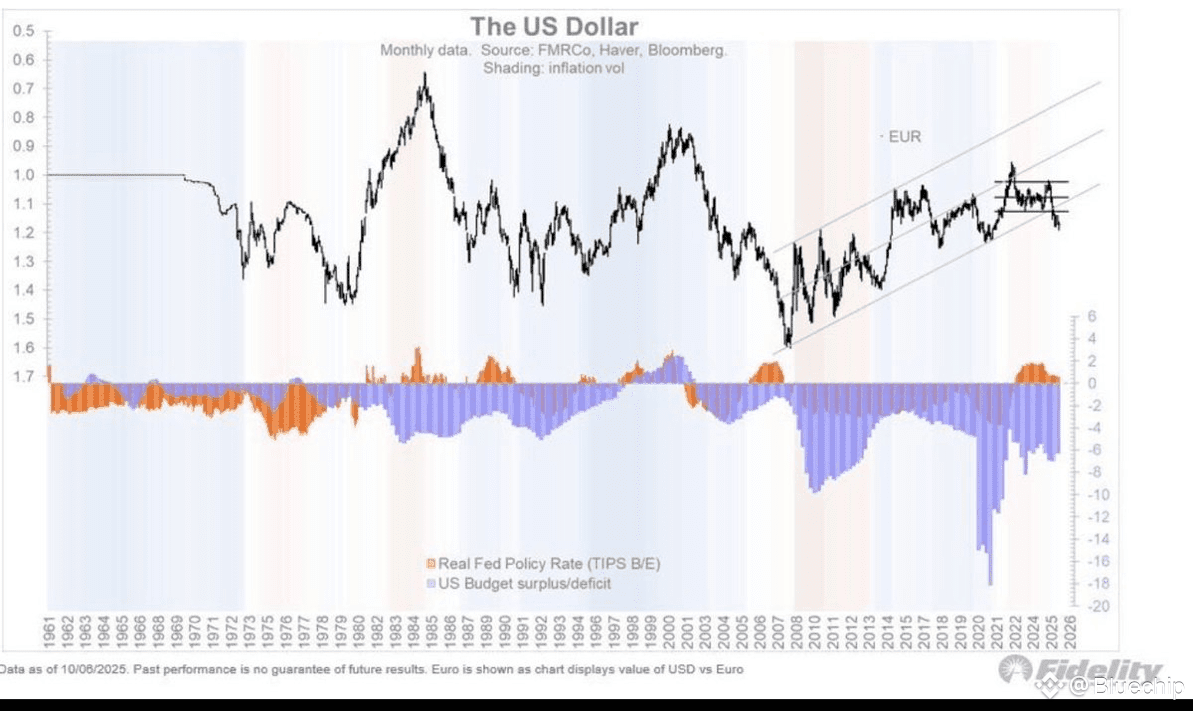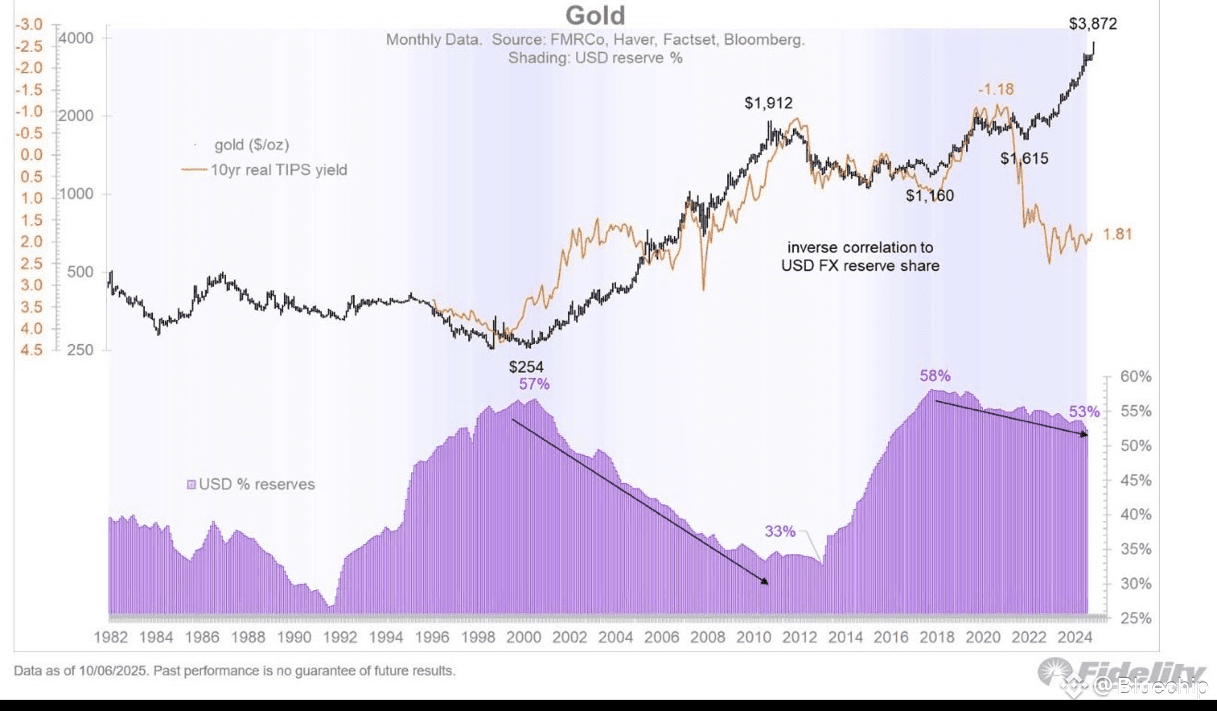For over seven decades, the U.S. dollar has been viewed as unbeatable ,the cornerstone of the global financial system, the ultimate reserve for every central bank.
But the latest data tells a different story, quieter, yet far more dangerous.
Long-term trends reveal a deep structural shift that is steadily eroding the pillars of dollar dominance.
🔹 Pillar 1: The Erosion of Confidence in U.S. Fiscal and Monetary Policy
Historical data spanning 60 years shows an alarming pattern:
The real interest rate of the Federal Reserve has become more volatile than ever — swinging from sharp positives to deep negatives within short cycles.
The U.S. fiscal deficit has turned chronic, with rare moments of surplus quickly drowned in a sea of rising debt.
The result?
The very foundation of the dollar; global trust in U.S. financial discipline; is being undermined.
Each new dollar issued to fund Washington’s deficit is another step toward diluting its real value and weakening its global standing.

🔹 Pillar 2: The Rise of the Silent Golden Rival
The second chart, titled “Gold”, reveals an astonishing inverse relationship:
As the dollar’s share of global reserves (gray area) declines,
The price of gold (black line) rises steadily over time.
This is no coincidence.
Central banks and major institutions aren’t buying gold for speculation, but as a long-term hedge against the dollar’s decline.
Gold, the “neutral asset” that belongs to no political authority, is reclaiming its role as a strategic alternative in a world losing faith in U.S. monetary leadership.

🔹 The Takeaway: A Structural Shift You Can’t Ignore
What’s happening isn’t a temporary market fluctuation, it’s a redistribution of global trust.
Runaway government spending and erratic monetary policies are driving nations toward more stable stores of value.
In this landscape, gold has become the “anti-dollar”, and its sustained rise is effectively a report card on global confidence in Washington’s fiscal path.
🔹 What This Means for You
This isn’t just an academic debate for economists, it directly impacts:
Your investments,
Your currency’s purchasing power,
And your international business strategies.
The era of automatic dollar supremacy is coming to an end.
The world is moving toward a multi-polar monetary system one where trust, not tradition, determines the world’s reserve currency.
